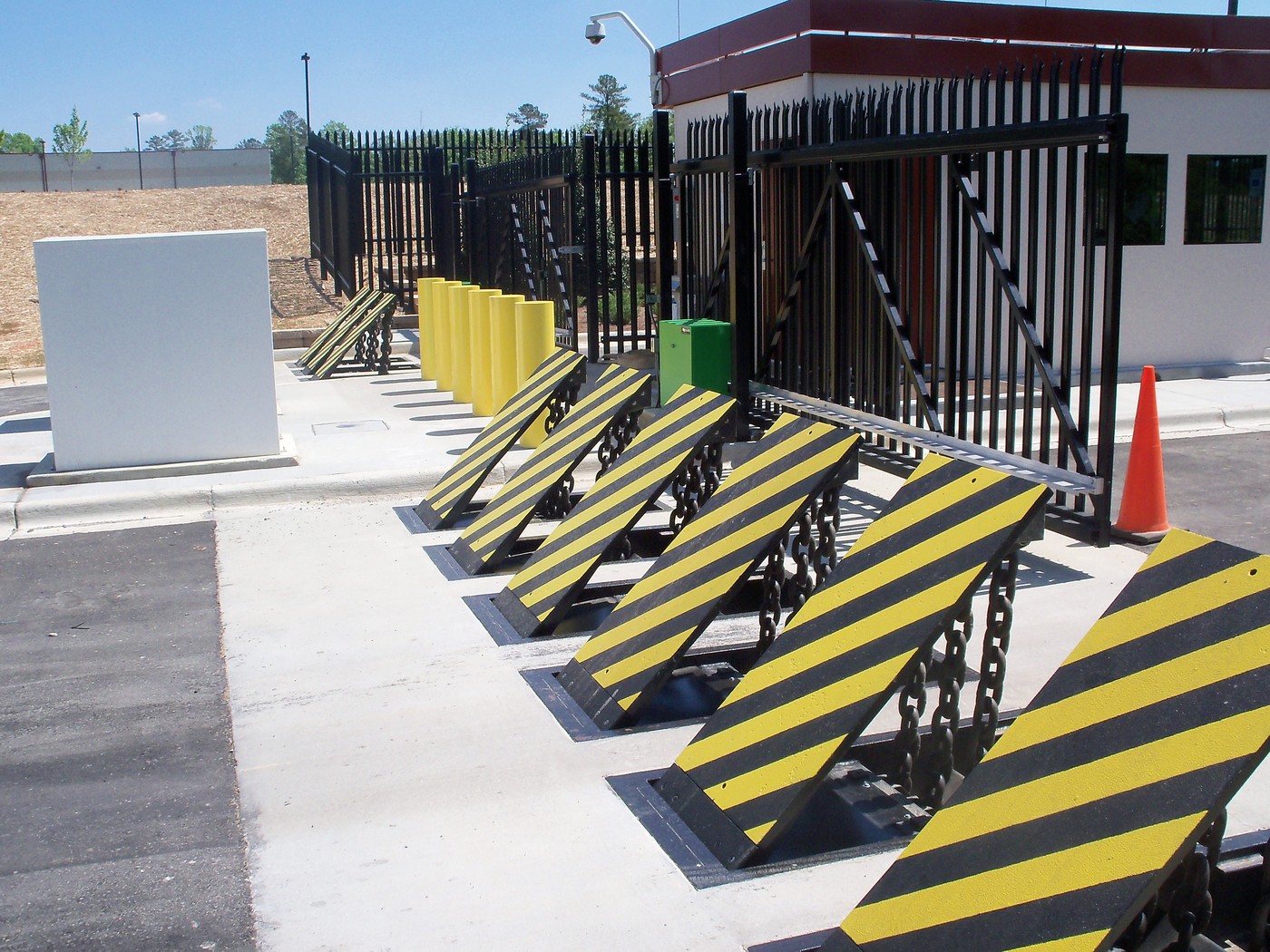Excitement About Wedge Barriers
Table of ContentsThe smart Trick of Wedge Barriers That Nobody is Talking AboutThe 45-Second Trick For Wedge Barriers


18 might be done a lot more promptly, conveniently, and cost effectively. FIG. In particular embodiments, the support 30 may be a steel structure consisting of plates, beam of lights(e. g., I-beams ), and/or other structures that are safeguarded within the foundation 14, which may be concrete. At the surface 12, an upper side 28 of the support 30 might go to least partially revealed
, thus making it possible for the add-on of the barrier 10 to the anchor 30. g., threaded holes)in one or even more light beams or plates of the support 30 might be subjected to the surface area 12. In this fashion, screws 32 or various other mechanical bolts may be made use of to protect the obstacle 10 to the anchor 30. As the barrier 10 is placed to the surface 12 of the structure 14, collection of debris and various other product underneath the obstacle might be decreased, and parts of the bather 10 might not be subjected to listed below quality environments. As indicated by referral character 52, the training device 50 consists of parts got rid of underneath the wedge plate 16. For example, the elements 52 under the wedge plate 16 might include an electromechanical actuator, a camera, one or more web cam surface areas, etc. Furthermore, the training device 50 includes a springtime setting up 54
The spring pole 58 is coupled to a cam(e. g., web cam 80 revealed in FIG. 4) of the lifting mechanism 50. The springs 60 disposed about the spring pole 58 are held in compression by spring sustains 62, including a fixed springtime assistance 64. That is, the set spring assistance 64 is dealt with loved one to the structure 14 et cetera of the bather 10.
Indicators on Wedge Barriers You Should Know
The continuing to be pressure used to
the cam camera deploy the wedge plate 16 may might provided by an electromechanical actuator 84 or other various other. The spring setting up 54 and the actuator 84(e. Wedge Barriers. g., electromechanical actuator)might run with each other to convert the camera and lift the wedge plate 16.
As mentioned over, the spring assembly 54 applies a continuous pressure on the web cam, while the electromechanical actuator may be managed to apply a variable force on the web cam, thereby making it possible for the training and lowering( i. e., deploying and retracting )of the wedge plate 16. In certain embodiments, the constant pressure applied by the springtime assembly 54 might be flexible. g., electromechanical actuator) is disabled. As will be appreciated, the spring assembly 54 might be covered and shielded from particles or other components by a cover plate(e. g., cover plate 68 revealed in FIG. 4) that might be significantly flush with the raised surface 38 of the foundation 14. As discussed over, in the released placement, the wedge plate 16 serves to block access or travel beyond the barrier 10. For instance, the barrier 10(e. g., the wedge plate 16 )may obstruct pedestrians or lorries from accessing a residential property or path. As discussed over, the visit homepage barrier 10 is affixed to the support 30 safeguarded within the foundation 14,

front brackets 71. As a result, the linkage assemblies 72 might pivot and turn to allow the collapse and expansion of the linkage settings up 72 during retraction and release of the bather 10. The link assemblies 72 cause activity of the wedge plate 16 to be limited. If a lorry is taking a trip towards the deployed wedge plate 16(e. For instance, in one situation, the safety and security legs 86 might be prolonged throughoutmaintenance of the barrier 10. When the security legs 86 are deployed, the safety legs 86 support the weight of the wedge plate 16 versus the surface 12. Consequently, the lifting system 50 might be shut off, serviced, eliminated, changed, and so forth. FIG. 5 is partial perspective view of a personification of the surface-mounted wedge-style barrier 10, showing the camera 80 and the web cam surfaces 82 of the training device 50. Particularly, 2 webcam surface areas 82, which are described as reduced camera surfaces 83, are positioned listed below the cam 80. The lower webcam surface areas 83 may be repaired to right here the surface 12 (e. For instance, the reduced camera surface areas 83 and the mounting plate 85 may form a solitary piece that is safeguarded to the anchor 30 by screws or other mechanical fasteners. In addition, 2 webcam surfaces 82, which are referred to as upper web cam surface areas 87, are positioned over the camera 80 and combined to (e. In various other personifications, intervening layers or plates might be positioned between the surface area 12 and the lower web cam surface areas 83 and/or the wedge plate 16 and the upper camera surfaces 87 As discussed above, the webcam
80 converts along the cam surface areas 82 when the wedge plate 16 is raised from the retracted position to the deployed placement. In addition, as discussed over, the springtime setting up 54 (see FIG. 3 )may offer a force acting on the cam 80 in the instructions 102 through springtime pole 58, which might reduce the force the electromechanical actuator 84 is required to use to the webcam 80 in order to activate and lift the wedge plate 16. 1 )to the deployed setting(see FIG. 4). As revealed, the camera 80 consists of track wheels 104(e. g., rollers), which get content in touch with and convert along the web cam surfaces 82 during operation.